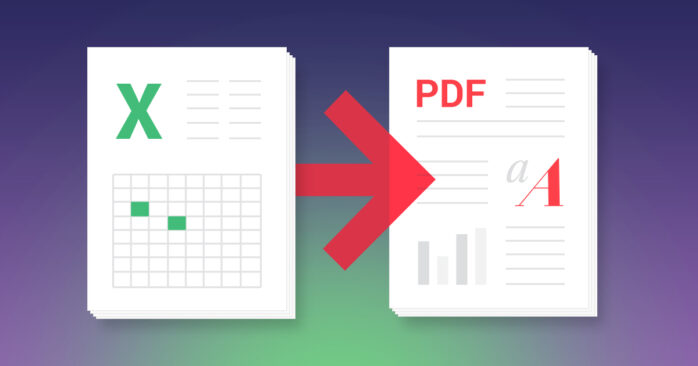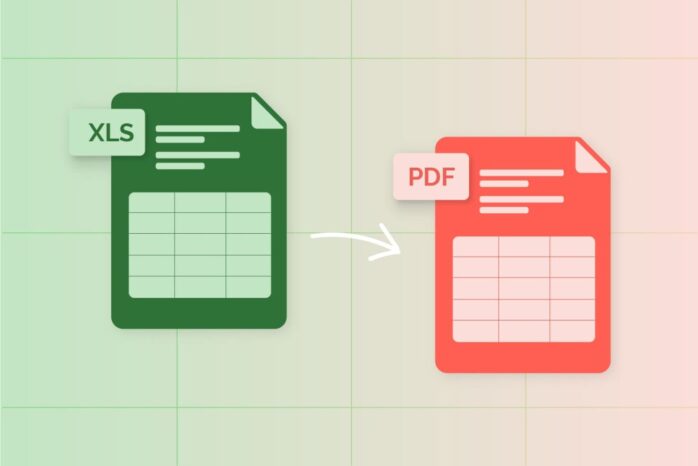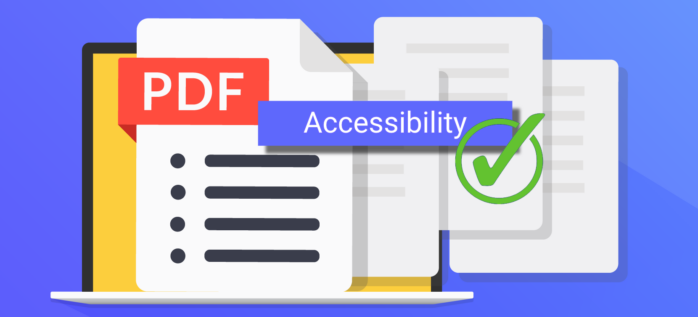
In an enterprise, managing files well is important for both productivity and security. Converting Excel files to PDF is key in current record control. You can do it with tools like Microsoft Excel or an online converter. This procedure allows maintenance reviews, statements, and different key files uniform and sound.
Converting Excel to PDF
Converting Excel files to PDFs is essential these days. It is a key project in digital workplaces. People know Excel for its versatility with statistics and math. It often generates documents in XLS or XLSX layout. But, to share those files, you have to convert them to PDF. Also, you need to make sure they seem identical on one-of-a-kind structures.

How to Convert Excel to PDF
- In Excel, you can convert a document to PDF. This approach maintains the layout and format of the spreadsheet. It makes positive that the PDF looks as if an Excel file.
- Using an Online Excel to PDF Converter, you can convert Excel files to PDF easily and enable a smooth flow to a paperless office.
- Tools for Converting Excel to PDF have greater features. These encompass batch conversions, OCR (Optical Character Recognition), and encryption. You can use Adobe Acrobat for a robust answer or a free online converter.
Benefits of Excel to PDF Conversion in Digitizing the Workspace
- Converting Excel documents to PDFs can prevent editing—it additionally enhances the record’s safety.
- A PDF document ensures that the document’s layout and layout stay equal. This is true regardless of the tool or platform used to view it.
- PDFs are well-suited anywhere. They are clean to proportion and view. The recipient no longer wants Excel.
- Storing documents as PDFs enables organizing archives. It additionally guarantees compliance with rules for record retention.
Integrating Excel to PDF Conversion into Business Processes
Businesses have to add Excel to PDF conversion to their normal workflow. This will streamline file management, enhance collaboration, and help manage useful resources in a paperless surrounding. This can contain a training body of workers on using Excel’s built-in functions. Or, it may imply using online equipment and PDF converters to handle file conversions.
Ensuring PDF Accessibility

Creating accessible PDFs from Excel ensures that documents are usable by people with disabilities, aligning with inclusivity and legal standards. This involves adding structure tags, providing alternative text for images and charts, and ensuring that the document is navigable using assistive technologies. Accessibility features in PDFs help in reading and interpreting content correctly, making documents universally accessible. This process requires careful planning and execution, including testing with screen readers and adhering to guidelines such as the Web Content Accessibility Guidelines (WCAG). By prioritizing accessibility, businesses demonstrate social responsibility and expand their documents’ reach to a broader audience.
Optimizing PDF File Sizes
When converting Excel files to PDF, managing file size without compromising quality is crucial for efficient storage and sharing. Large Excel files with complex data, graphics, and formatting can result in sizable PDFs, which can be cumbersome to distribute and store. Techniques to reduce PDF file size include compressing images, removing unused objects and metadata, and selecting the optimal PDF settings that balance quality and size. Some advanced tools offer features like selective compression, where users can choose specific elements for higher compression. Optimizing PDFs ensures that documents are easily shareable via email or cloud services, facilitating quicker access and saving storage space.
Implementing Version Control

In document management, version control is essential for tracking the evolution of documents, including those converted from Excel to PDF. It involves managing changes and revisions systematically to maintain document integrity over time. Implementing version control requires a structured approach, where each version is clearly labeled and stored, with a log of changes and the ability to revert to previous versions if needed. This is particularly important in collaborative environments where multiple stakeholders contribute to a document. Effective version control supports audit trails, enhances collaboration, and ensures that the most current and accurate version of a document is always available.
Enhancing Document Security
Security is a paramount concern when dealing with sensitive information in documents. Converting Excel files to PDF can enhance document security through various features such as password protection, encryption, digital signatures, and watermarking. These measures prevent unauthorized access, editing, and duplication, ensuring that confidential data remains secure. Encryption protects the document’s contents during transmission, while digital signatures verify the document’s authenticity and integrity. Watermarking can deter unauthorized sharing by embedding identifiable information in the document. By leveraging these security features, organizations can safeguard sensitive data and comply with privacy regulations.
Facilitating Collaboration with PDFs

PDFs are widely used for their compatibility and consistency across platforms, making them ideal for collaborative efforts. When Excel files are converted to PDFs, the format ensures that the document looks the same to all users, facilitating clear communication and feedback. Modern PDF tools support annotations, comments, and markups, allowing team members to review and contribute to documents seamlessly. Integrating PDFs into collaboration platforms and using cloud storage can further enhance teamwork by enabling real-time updates and access from anywhere. This collaborative approach streamlines workflows, accelerates decision-making, and improves the overall efficiency of projects.
Conclusion
Being able to convert Excel files to PDFs is vital. It is vital for modern report management. It enables the shift to a digital, paperless workplace. Businesses can use tools like Microsoft Excel or Adobe Acrobat. They also can use free online tools to transform Excel to PDF. These equipment decorate record control methods. They assist make certain stable, accurate, and on-hand documents that assist operational goals.











